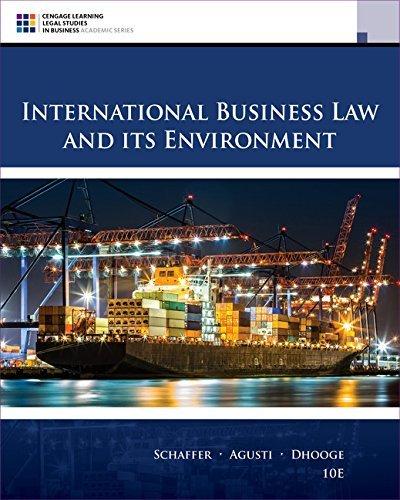Question
1.The controversial Trans-Pacific Partnership Agreement was negotiated and signed by President Obama on the basis of trade promotion authority from Congress. It includes 12 countries
1.The controversialTrans-Pacific Partnership Agreementwas negotiated and signed by President Obama on the basis of trade promotion authority from Congress. It includes 12 countries of Asia and the Pacific Rim, but not including China. The TPP includes provisions on trade, enforcement of labor and environmental laws, currency manipulation, IP protection, investment protection, and new rules to promote e-commerce and digital trade. President Obama argued that the TPP would boost exports and increase U.S. jobs by opening markets for American products. He also saw it as a way of increasing ties between U.S. and Asian companies while offsetting China's growing economic, military, and geopolitical influence in the pacific region. However, during 2016 the TPP came under great popular criticism from politicians and labor groups that argued that the tariff reductions would cause losses in U.S. manufacturing jobs. In 2017, President Trump said he believed in "fair trade" rather than "free trade," and called the TPP a "bad deal." Three days after his inauguration, he used a presidential memorandum to withdraw the United States as a signatory to the agreement. Those in favor of the agreement responded that if the United States did not join, that the other signatories might enter into their own agreement without the United States. Moreover, China added that it would consider entering the TPP if the United States withdrew.
a.) What is the status of the TPP today?
b.) What are the key arguments for and against the United States increasing trade ties with Asia? As a beginning, consider this research document:The Trans-Pacific Partnership (TPP): Key Provisions and Issues for Congress, Congressional Research Service, Report by Ian F. Fergusson and Brock R. Williams, R44489, June 14, 2016.
c.) The TPP came under question at a time of rising populism, nationalism, and anti-immigration sentiment in many countries, including the United States, the United Kingdom, and others. How do you see these forces as affecting global trade relations at the time of your reading or in the foreseeable future?
2.Every year, the U.S. Trade Representative issues a report on foreign government trade barriers to U.S. goods and services, known as theNational Trade Estimate Report on Foreign Trade Barriers. Locate the most recent report, choose three countries, and describe the nature of trade barriers facing U.S. export firms. What industries are most affected?
Step by Step Solution
There are 3 Steps involved in it
Step: 1

Get Instant Access to Expert-Tailored Solutions
See step-by-step solutions with expert insights and AI powered tools for academic success
Step: 2

Step: 3

Ace Your Homework with AI
Get the answers you need in no time with our AI-driven, step-by-step assistance
Get Started


